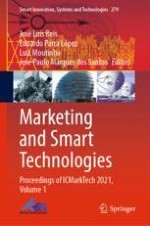2022 | OriginalPaper | Chapter
What Changed in One Year of a Pandemic and What the Portuguese are not Willing to Admit: Consumer Neuroscience and Predictive Analytic Contributes to Communication Strategy
Authors : Valentina Chkoniya, Dorota Reykowska, Rafal Ohme, Ana Côrte-Real
Published in: Marketing and Smart Technologies
Publisher: Springer Nature Singapore
Activate our intelligent search to find suitable subject content or patents.
Select sections of text to find matching patents with Artificial Intelligence. powered by
Select sections of text to find additional relevant content using AI-assisted search. powered by
